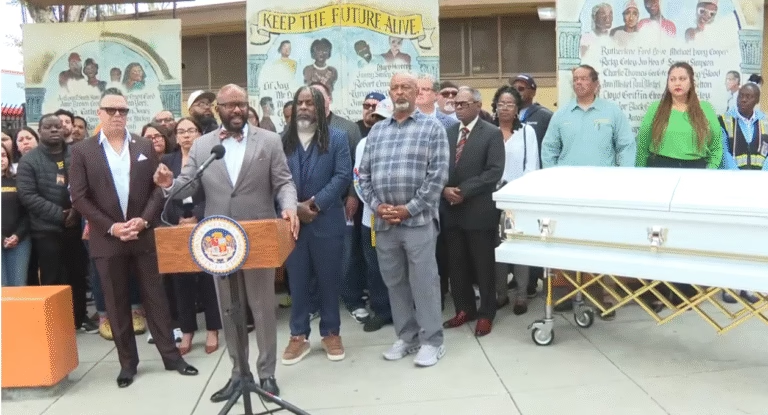Carson, CARSON — Rep. Nanette Barragán (CA-44) May 27 joined Federal Communications Commission or FCC Commissioner Anna Gomez and Carson City Mayor Lula Davis-Holmes to demand that FCC Chairman Brendan Carr immediately publish the implementation requirements for the agency’s multilingual wireless emergency alert or WEA rule in the Federal Register — a necessary step to activate this life-saving policy unanimously approved by the FCC in October 2023.
The delay in publishing these implementation requirements has stalled critical improvements to the WEA system that would make emergency alerts accessible in over a dozen languages—including Spanish, Chinese, Korean, Tagalog and Vietnamese.
“In emergencies, every second counts—and every word must be understood,” said Rep. Barragán. “We’ve seen what happens when communities don’t get accurate information in their language. It leads to panic, confusion, and danger. Chairman Carr’s delay is not just bureaucratic, it’s reckless.”
The press conference comes after a false evacuation alert that was sent out to residents in LA County during the January wildfires, which caused widespread chaos when a technical glitch sent a county-wide warning intended for a single neighborhood. This was confusing for all 10 million LA County residents who received the alert, but especially for the 2.5 million LA County residents who are classified as having limited English proficiency. When disaster struck, many non-English speakers were left unsure of what was happening, compounding confusion and fear.
“As we see an increase in natural disasters such as wildfires, floods, and hurricanes, expanding access to life-saving information is becoming more and more important,” said FCC Commissioner Gomez. “We cannot play politics with public safety. It’s time for the FCC to allow this process to move forward so that more people can receive the critical information they need in their chosen language.”
“When lives are on the line, there’s no excuse for delay,” said Carson Mayor Lula Davis-Holmes. “In a city as diverse as Carson, our residents need to receive nationwide emergency alerts in the language they understand. This is about equity, safety, and respect. I join Congresswoman Barragán and Commissioner Gomez in calling on Chairman Carr to do what’s right—act now and publish the implementation requirements.”
Rep. Barragán, Commissioner Gomez, and Mayor Davis-Holmes urged Chairman Carr to publish the implementation requirements immediately to start the 30-month compliance clock, requiring mobile service providers to install alert templates on Americans’ phones that would automatically translate alerts into the devices’ default language.
The push has strong backing from the top Democrat on the Senate telecommunications subcommittee and the current and former chairs of the Congressional Hispanic Caucus, Congressional Asian Pacific American Caucus, and Congressional Black Caucus, whose members represent communities most impacted by language-access failures.
Details: The group led a letter to FCC chairman Brendan Carr on the issue, found HERE.
The livestream to the event can be found HERE.












